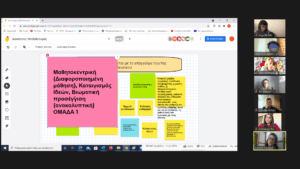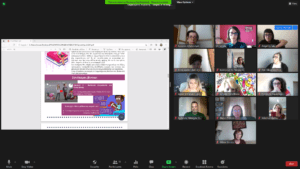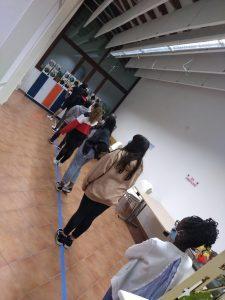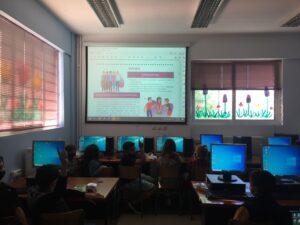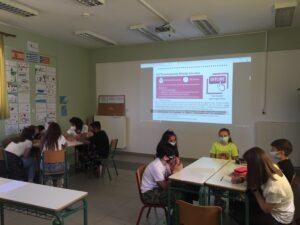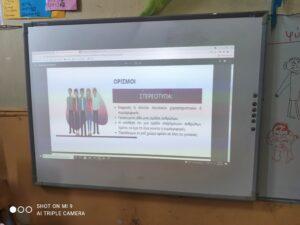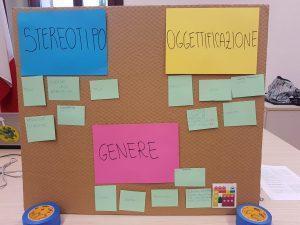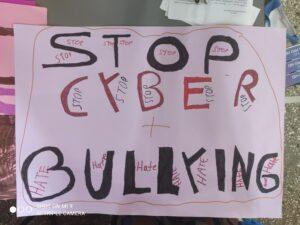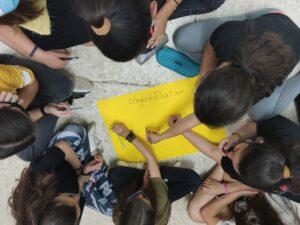The child protection policy of ON-OFF applies to all the staff of the ON-OFF Consortium dealing directly with children within the project and is aimed at:
- Ensuring safe recruitment in checking the suitability of staff to work with children.
- Raising awareness of child protection issues and equipping children with the skills needed to keep them safe.
- Developing and implementing procedures for identifying and reporting cases, or suspected cases, of abuse.
- Supporting children who have been abused in accordance with child protection regulation and protocols in each national context.
- Establishing a safe environment in which children can learn and develop.
Download the ON-OFF Child Protection Policy
The training of teachers are trainings that every partner association of the ON OFF project deliver to teachers and educators that, lately, will implement the workshops of the ON OFF methodology with young people.
In the training, the trainer explains the ON OFF project and all the workshops, including the activities from each one, with the objective of giving the required knowledge to teachers and educators to implement them with young people.
The trainer is a prepared person from each partner association, that has received formation on the ON OFF methodology and workshops, and that is able to solve doubts and explain the project and its objectives.
The testing with young people is delivered by the teachers in each partner Country.
Around 100 teachers and educators, trained by the partners, implement the Intervention Strategies with more than 1000 young people aged 12-17.
This phase succeeded to raise awareness on gender stereotypes and online GBV. Thanks to emotionally engaging, informative and stimulating activities proposed with the Workshops of the ON-OFF Model, they have reflected on how many gender stereotypes are present in our daily lives, how we can be more respectful and avoid them, how we can communicate in a more positive way, how many different forms of online GBV there can be, how we can pay more attention with our behaviors and relations online, the concrete and offline effect of what happens online, the importance of not underestimate negative episodes and of not blaming the victim.
The objective of the evaluation of the behavioral change of the ON-OFF project is to analyze the effectiveness and impact of the ON-OFF Model especially in relation to know what favors the change in the way people communicate, relate and act.
Two questionnaires addressed to young people and two questionnaires addressed to teachers/educators were defined to be submitted before the workshops and at the end of the project in order to measure the behavioral change.
The project identified 8 behavioral changing goals:
- Strengthening the ability to recognize the phenomenon of the objectivation of women
- Increase the awareness of the responsibilities of the guilty and not of the victims in cases of discrimination and gender-based violence
- Improve the ability of young people to recognize form of cyberbullying
- Raise awareness of the power of new technologies (social media) and how they can also be harmful
- Raise awareness of the severity of cyberbullying
- Raise awareness that the construction of one’s gender identity is a construction influenced by society
- Improve the ability to recognize the social impact of gender stereotypes in mass communication
- Raise awareness about the capabilities of the misuse of digital technologies can offend, humiliate, threaten, harass or abuse
The Policy Recommendations represent a series of operational and strategic indications for combating online gender-based violence, starting from the assumption that the online dimension makes certain behavior less evident that can be considered real violence.
The Policy Recommendations are the result of the analysis of the behavioral change manifested by the participants during the training process and summarize in 9 proposals addressed to administrators, teachers, educators and communication experts a series of strategic and operational indications on which to work individually, as institutions and as a community to educate to gender equality






